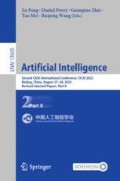Abstract
The current deep neural networks (DNN) are easily fooled by adversarial examples, which are generated by adding some small, well-designed and human-imperceptible perturbations to clean examples. Adversarial examples will mislead deep learning (DL) model to make wrong predictions. At present, many existing white-box attack methods in the image field are mainly based on the global gradient of the model. That is, the global gradient is first calculated, and then the perturbation is added into the gradient direction. Those methods usually have a high attack success rate. However, there are also some shortcomings, such as excessive perturbation and easy detection by the human’s eye. Therefore, in this paper we propose a Saliency Map-based Local white-box Adversarial Attack method (SMLAA). The saliency map used in the interpretability of artificial intelligence is introduced in SMLAA. First, Gradient-weighted Class Activation Mapping (Grad-CAM) is utilized to provide a visual interpretation of model decisions to find important areas in an image. Then, the perturbation is added only to important local areas to reduce the magnitude of perturbations. Experimental results show that compared with the global attack method, SMLAA reduces the average robustness measure by 9%–24% while ensuring the attack success rate. It means that SMLAA has a high attack success rate with fewer pixels changed.
Access this chapter
Tax calculation will be finalised at checkout
Purchases are for personal use only
References
Szegedy, C., et al.: Intriguing properties of neural networks. arXiv preprint arXiv:1312.6199 (2013)
Duan, R., et al.: Adversarial laser beam: effective physical-world attack to DNNs in a blink. In: Proceedings of the IEEE/CVF Conference on Computer Vision and Pattern Recognition (CVPR), pp. 16062–16071 (2021)
Akhtar, N., Mian, A.: Threat of adversarial attacks on deep learning in computer vision: a survey. IEEE Access 6, 14410–14430 (2018)
Qiu, S., Liu, Q., Zhou, S., Wu, C.: Review of artificial intelligence adversarial attack and defense technologies. Appl. Sci. 9(5), 909 (2019)
Li, X., et al.: Adversarial examples versus cloud-based detectors: a black-box empirical study. IEEE Trans. Depend. Secur. Comput. 18(4), 1933–1949 (2019)
Dong, X., et al.: Robust superpixel-guided attentional adversarial attack. In: Proceedings of the IEEE/CVF Conference on Computer Vision and Pattern Recognition (CVPR), pp. 2895–12904 (2020)
Zhou, B., Khosla, A., Lapedriza, A., Oliva, A., Torralba, A.: Learning deep features for discriminative localization. In: Proceedings of the IEEE Conference on Computer Vision and Pattern Recognition (CVPR), pp. 2921–2929 (2016)
Selvaraju, R.R., Cogswell, M., Das, A., Vedantam, R., Parikh, D., Batra, D.: Grad-CAM: visual explanations from deep networks via gradient-based localization. In: Proceedings of the IEEE International Conference on Computer Vision (ICCV), pp. 618–626 (2017)
Alvarez Melis, D., Jaakkola, T.: Towards robust interpretability with self-explaining neural networks. In: Advances in Neural Information Processing Systems 31 (2018)
Guidotti, R., Monreale, A., Ruggieri, S., Turini, F., Giannotti, F., Pedreschi, D.: A survey of methods for explaining black box models. ACM Comput. Surv. (CSUR) 51(5), 1–42 (2018)
Baehrens, D., Schroeter, T., Harmeling, S., Kawanabe, M., Hansen, K., Mueller, K.: How to explain individual classification decisions. J. Mach. Learn. Res. 11, 1803–1831 (2010)
Robnik-Šikonja, M., Kononenko, I.: Explaining classifications for individual instances. IEEE Trans. Knowl. Data Eng. 20(5), 589–600 (2008)
Sundararajan, M., Taly, A., Yan, Q.: Axiomatic attribution for deep networks. In: International Conference on Machine Learning. PMLR, vol. 70, pp. 3319–3328 (2017)
Goodfellow, I.J., Shlens, J., Szegedy, C.: Explaining and harnessing adversarial examples. arXiv preprint arXiv:1412.6572 (2014)
Madry, A., Makelov, A., Schmidt, L., Tsipras, D., Vladu, A.: Towards deep learning models resistant to adversarial attacks. arXiv preprint arXiv:1706.06083 (2017)
Dong, Y., et al.: Boosting adversarial attacks with momentum. In: Proceedings of the IEEE Conference on Computer Vision and Pattern Recognition (CVPR), pp. 9185–9193 (2018)
Duan, Y., Zhou, X., Zou, J., Qiu, J., Zhang, J., Pan, Z.: Mask-guided noise restriction adversarial attacks for image classification. Comput. Secur. 100, 102111 (2021)
Xiang, T., Liu, H., Guo, S., Zhang, T., Liao, X.: Local black-box adversarial attacks: a query efficient approach. arXiv preprint arXiv:2101.01032 (2021)
Moosavi-Dezfooli, S.M., Fawzi, A., Frossard, P.: DeepFool: a simple and accurate method to fool deep neural networks. In: Proceedings of the IEEE Conference on Computer Vision and Pattern Recognition (CVPR), pp. 2574–2582 (2016)
Huang, Y., et al.: AdvFilter: predictive perturbation-aware filtering against adversarial attack via multi-domain learning. In: Proceedings of the 29th ACM International Conference on Multimedia, pp. 395–403 (2021)
Zhou, W., Bovik, A.C., SheiKh, H.R., Simoncelli, E.P.: Image quality assessment: from error visibility to structural similarity. IEEE Trans. Image Process. 13(4), 600–612 (2004)
Author information
Authors and Affiliations
Corresponding author
Editor information
Editors and Affiliations
Rights and permissions
Copyright information
© 2022 The Author(s), under exclusive license to Springer Nature Switzerland AG
About this paper
Cite this paper
Liu, H., Zuo, X., Huang, H., Wan, X. (2022). Saliency Map-Based Local White-Box Adversarial Attack Against Deep Neural Networks. In: Fang, L., Povey, D., Zhai, G., Mei, T., Wang, R. (eds) Artificial Intelligence. CICAI 2022. Lecture Notes in Computer Science(), vol 13605. Springer, Cham. https://doi.org/10.1007/978-3-031-20500-2_1
Download citation
DOI: https://doi.org/10.1007/978-3-031-20500-2_1
Published:
Publisher Name: Springer, Cham
Print ISBN: 978-3-031-20499-9
Online ISBN: 978-3-031-20500-2
eBook Packages: Computer ScienceComputer Science (R0)

